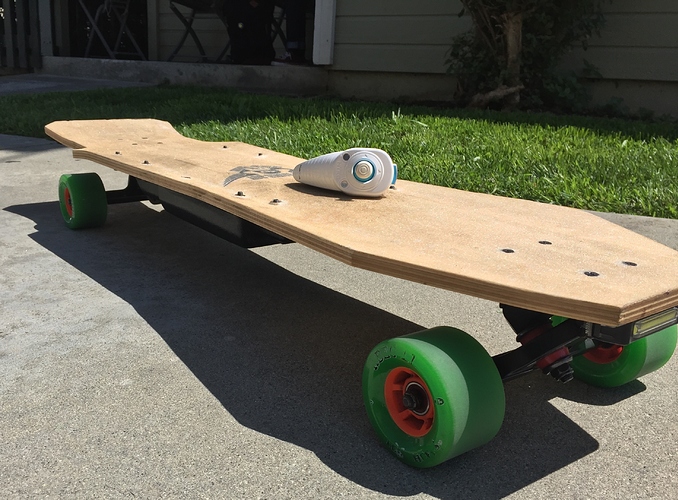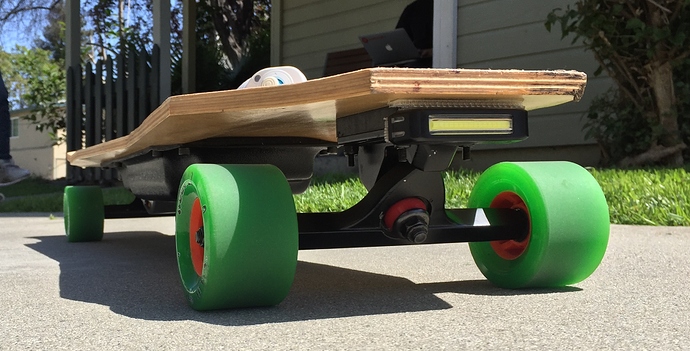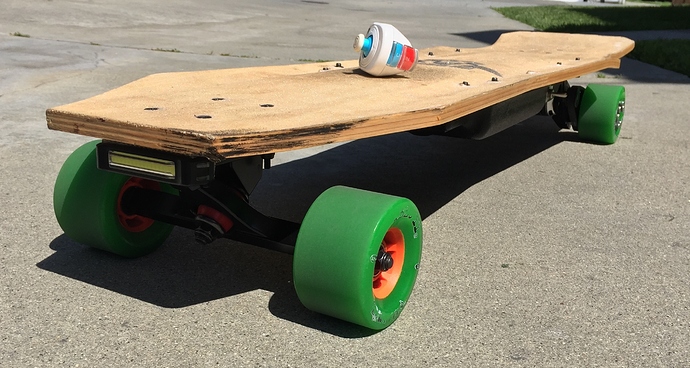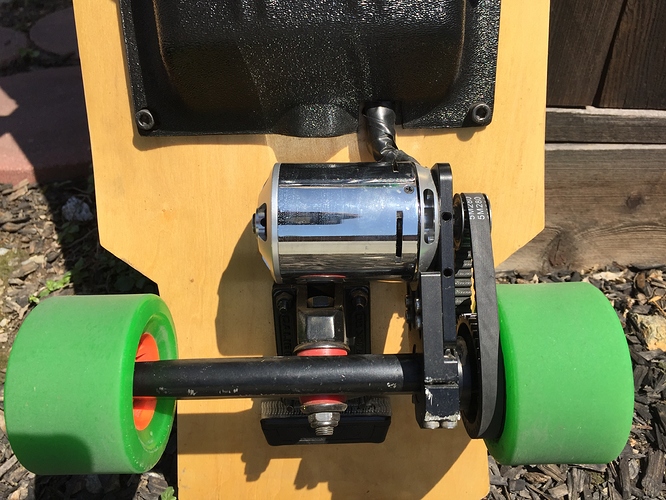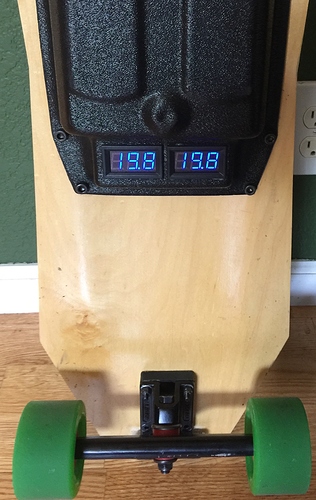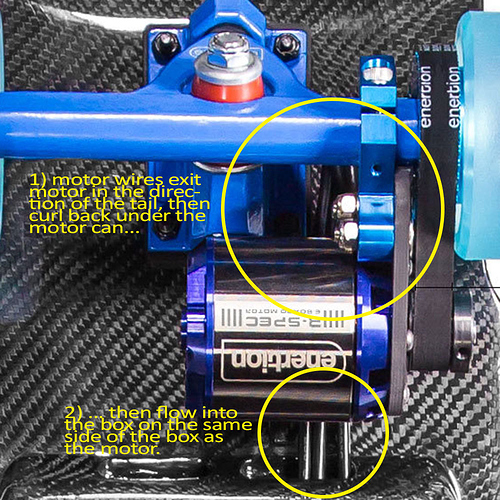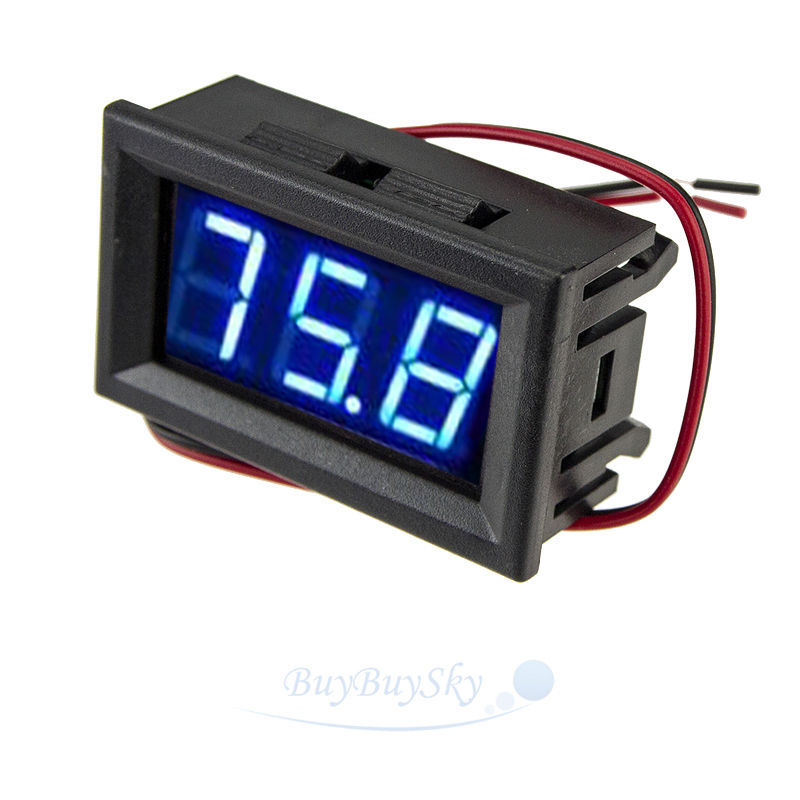Hey everyone,
I began getting all the parts together for this build back in November when I first started lurking this forum. Originally just threw everything together on an old skateboard deck that I planned to cut into a cut into a cruiser deck shape but that was kind of terrifying to ride so I ended up getting a @longhairedboy deck that I am very happy with now. It’s not complete and I don’t think it really ever will be since there’s a ton of (probably unnecessary) things/features I still want to add.
My roommates gave it the name “The Bronco” since it has bucked all three of them off from cutouts causing them to fall at kind of scary speeds and the board has some nice battle scars to show for it. I’ve learned to just accelerate slowly (since a cutout then is harder to recover from) and when it reaches a safe cruising speed I’ll just brace for the inevitable drop out and let off the throttle so it’s not that hard to deal with. Eventually I’ll probably just get an enertion controller but I still kind of want to make one myself so we’ll see. Number 1 on my to do list.
The part list:
- LHB deck sporting the natural wood look
- Turnigy SK3 6374 192kv Brushless Outrunner Motor
- @chaka VESC
- (2) Turnigy 5000mAh 5S 20C Lipo Packs
- Vedder Anti Spark Switch
- Wii Nunchuck Controller
- @psychotiller V2 Enclosure
- @torqueboards Mount/Pulleys/Belt 16T/36T
- Caliber II Trucks
- 83mm ABEC 11 75a Flywheels
- Bones Reds bearings
I absolutely love the look of the wooden deck with the green and orange Abec 11 wheels
Still need to buy some shorter screws for the enclosure since you can seem them poking through the top a little bit here
Headlight and tailight held on with the 3M dual lock faster tape velcro thingys so I can easily take it off when it needs to be charged.
Some nice scuff marks from tires/curbs when the board went rogue
Surprisingly you can’t really even feel the long screws peeping through when actually riding. The board has a kind of concave up shape on top that levels it out a little bit I guess. I’ll probably put dark grip to cover the screws but I also don’t want to cover LHBs beautiful logo
Before I made a foam gasket for the enclosure there was a lot of vibration and a couple screws rattled out but it doesn’t really need all 10 anyway
9mm belt with 16T/36T geating ratio. Not a big fan of the 9mm belt. Torqueboards mentioned a few weeks or months ago that he was going to start selling a 15mm set up which I still have my fingers crossed for. I spent a few hours in different CAD programs (zero experience in) trying to modify the open source pulley from the enertion website to 15mm but just got frustrated and gave up. If anyone knows how to get hold of a 15mm wheel pulley it would be geatly appreciated (already have the 15mm motor pulley from Torque)! If not I’ll probably just grab one of enertions new injection mold 12mm pulleys.
Also, I cut a separate slot for the motor wires because every time I tried to push them in the designated slot, the motor would eventually hit the wires and cut through the insulation. It’s also just more convenient with the VESC right there.
VESC/Spark Switch/Batteries held down with the 3M latching stuff. I originally thought the dropouts were a motor connection issue since there was one loose motor bullet connector falling out when I took the case off one time. So I decided to solder the motor wires directly to the VESC (the red you can see is just shrink tube not bullet connectors). I didn’t realize the VESC has an LED that lights when it is receiving a signal from the controller, which would have told me right away from a couple tests that it is actually the controllers fault for the dropouts. The nunchuck receiver is soldered directly to the VESC (not just connected with the JST connectors or whatever those are called) and hot glued over to ensure that they were staying put. I also thought that maybe the receiver near the motor could be a connection issue with the motor being a big magnet and all. But the dongle is actually way up at the front in front of the battery not seen in this picture, held down with the 3M latching tape and of course, wires soldered and covered in hot snot to keep them in place. Really feel like I did everything I could to ensure a perfect connection to the VESC but it just wasn’t meant to be.
I put 2 voltmeters in the enclosure because the first time I put the board together, one battery stayed around 19V while the other dropped to 12V and puffed. Turns out it was just a dud battery and the new ones stay within 0.1V but it’s also just kind of a cool look in my opinion. Still need to add a switch to turn them off though since I have them connected to the battery balance cables and they stay on even when I cut power to the VESC
They’re a lot bigger than I expected but they still ended up fitting nicely in the enclosure
It’s been a fun and frustrating project and I’m excited for how it will be looking/working in the next few months

